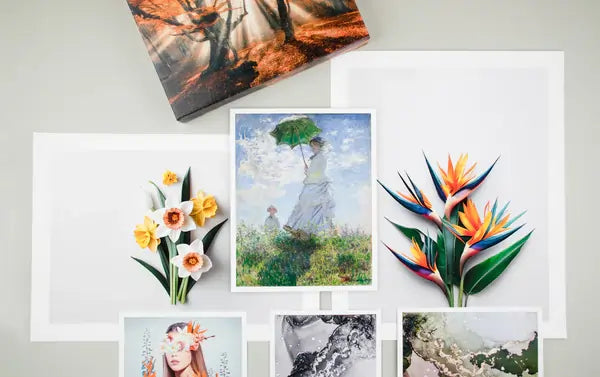
Tim Cunningham grew up in Cambridge, Vermont, a landscape that inspired artists like Aldro Hibbard and Emile Gruppe and deeply influenced Tim's creative journey. With a family legacy of artists, Tim was inspired to pursue a career in art. Studying under Brian Jekel at Pensacola Christian College, he developed a process for representational painting that continues to shape his work. Tim has earned recognition from Southwest Art, PleinAir Salon, the Art Renewal Center, and many others. Grateful for the gift of life, he signs every painting with “PTL” for “Praise The Lord.”

Interview
Can you tell us a bit about your journey as an artist? What sparked your interest in art?
My journey as an artist began in childhood, growing up in the Champlain Valley of Vermont. Surrounded by the beauty of rural America, I developed a deep love for the land, animals, and the quiet rhythm of nature. My mother homeschooled me, and her emphasis on fostering creativity allowed me the freedom to explore art from an early age. While my artistic curiosity was always there, I didn’t seriously consider it as a career until college. That’s where my passion for oil painting really took root. What sparked my interest in art was the simple yet profound idea that I could use paint to preserve fleeting moments—like the light filtering through a forest or the quiet strength of livestock in a field. These subjects resonate deeply with me, and they’ve remained central to my work ever since. Painting feels like an extension of who I am, a way to honor and share the beauty of creation.

Who are your biggest artistic influences, and how have they shaped your work?
Some of my biggest artistic influences are the great masters like John Singer Sargent, Winslow Homer, Anders Zorn, and Heinrich von Zügel. Their ability to capture light, atmosphere, and texture with such confidence and economy of brushstroke continues to inspire me. Sargent’s mastery of edges, Zorn’s brilliance with limited palettes, and Homer’s way of finding beauty in everyday life resonate strongly with my own love of rural and pastoral themes. Heinrich von Zügel, with his exceptional ability to depict livestock in dynamic, painterly compositions, has had a profound impact on my own approach to painting animals and the quiet dignity of rural life.
How do you stay motivated and inspired to continue creating new work?
I have a long list of paintings that I want to paint, so I just start the next one as soon as I finish the last one.

Could you describe your creative process? How do you typically begin a new piece?
My creative process begins with inspiration—usually sparked by the natural world or the quiet, unspoken stories of rural life. I’m drawn to moments of light and atmosphere, where the ordinary feels extraordinary. Once I have an idea, I often start by gathering references, either through plein air sketches, photos, or direct observation. Next, I work on composition sketches—small, loose thumbnails that allow me to experiment with the placement of shapes, the balance of light and shadow, and the overall mood I want to convey. This stage is crucial because it gives me a clear direction before committing to the canvas. Once the composition feels solid, I move on to a larger study or dive straight into the painting. I begin with an underpainting, often a warm wash of color, to establish the value structure and overall harmony. From there, I build up the painting in layers, working broadly at first and refining as I go. I use a variety of techniques—wet-on-wet, glazing, and scumbling—to create depth and texture, particularly in areas like fur, grass, or atmospheric light. For me, the most rewarding part of the process is those final touches—where a small flick of the brush can bring life to an eye, a sparkle to light, or the suggestion of wind through a field. That’s when the painting feels complete, and I know it’s ready to share.
What are some key tools or materials you use in your work and why are they important to you?
I work exclusively in oils because of their richness, flexibility, and the ability to layer and blend. They allow me to create subtle transitions in color and light, which is essential for capturing the atmosphere and textures I love.

What has been the most challenging project or phase in your career? How did you overcome it?
One of the most challenging phases in my career was during the COVID-19 pandemic. Like many artists, I saw the traditional gallery model—which I had relied on for years—suddenly become unstable. Galleries were closed, shows were canceled, and for a time, it felt like the career I had worked so hard to build was slipping through my fingers. It was a wake-up call. I realized that I had been relying heavily on galleries for exposure and sales, but they came with limitations: I was giving up 50% of every sale, and I had little control over the direction of my career. The pandemic upset everything, but in that chaos, I saw an opportunity to take a leap of faith and venture out on my own. I pivoted to building a direct connection with my audience. I started teaching online, selling my work directly through my website, and engaging more intentionally with collectors and students. It was terrifying at first, but it forced me to grow. I learned to trust myself and to see the value of my work outside the traditional structures I had been part of. What got me through was persistence, creativity, and the support of my family and community. That season taught me that challenges often hold the seeds of transformation. Today, I look back on that time as a turning point in my career. It gave me the freedom to shape my own path, and I’ve never looked back.

How important is community to your work as an artist? Are there any groups or networks you’re a part of?
Community is absolutely vital to my work as an artist. Art can be such a solitary pursuit, but the encouragement, feedback, and shared inspiration that comes from being part of a community are invaluable. I’ve learned that surrounding myself with other artists and art lovers not only enriches my work but also keeps me motivated and connected.
How do you balance the commercial aspects of being a professional artist with your creative process?
Balancing the commercial side of being a professional artist with the creative process is an ongoing challenge, but it’s one I’ve come to embrace. Early in my career, I relied heavily on galleries to sell my work, but over time, I realized that model limited my ability to connect directly with collectors and often felt disconnected from the people who appreciated my art. During the COVID-19 crisis, I shifted away from galleries and started managing my art business independently, which allowed me to take control of both the creative and commercial aspects of my career. This shift has been incredibly freeing but also requires discipline. I dedicate specific time to the business side—marketing, emails, managing memberships, and commissions—so that when it’s time to paint, I can focus fully on the creative process. I’ve also learned to view the commercial side not as a burden but as a way to build relationships with collectors, students, and supporters who make this life possible. Ultimately, I’ve found that the two sides feed each other. When I’m intentional about sharing my work and engaging with others, it inspires new creative ideas. And when I stay true to my vision in the studio, it strengthens the authenticity of what I share. The key is keeping both in balance and never losing sight of why I started painting in the first place—my love for creating and connecting through art.

What advice would you give to artists trying to gain more exposure for their work?
For artists trying to gain more exposure, my biggest piece of advice is to focus on building genuine connections. Social media can be an incredibly powerful tool, but it works best when used to share your story and engage meaningfully with others. Post consistently, show your process, and share not just your finished work but the journey behind it. People connect with authenticity, so let them see who you are as an artist and what inspires you.
If you could change one thing about the art industry, what would it be?
Honestly, I think that 2025 is going to be better than 2024. There are so many ways to connect, learn and grow. I can't think of anything that I would change––I'm just excited for the future.

How has working with The Stackhouse Printery impacted your work or opened new opportunities for you?
The Stackhouse Printery has made it possible for me to release limited edition prints of an exceptionally high quality. They have also helped me ship them all over the world.

www.cunninghamfineart.com




